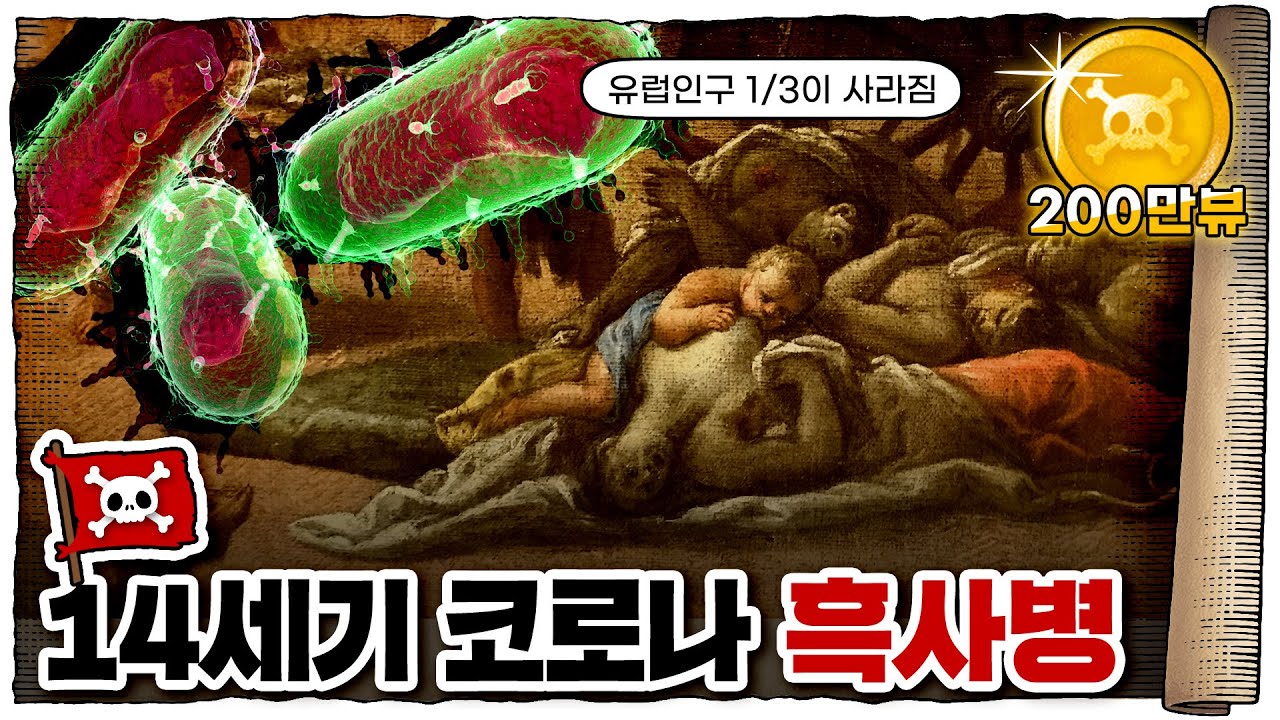A History of Pandemics, Part 1
Summary
TLDRThis video script explores the history of pandemics, highlighting some of the deadliest outbreaks throughout human history. From the ancient origins of smallpox to the devastating effects of the Antonine Plague, the Justinian Plague, the Black Death, and the spread of disease in the Americas, the script delves into how these pandemics shaped civilizations. It emphasizes humanity's resilience in the face of widespread illness and the eventual development of preventive measures like vaccines, culminating in the eradication of smallpox. The video also hints at other significant diseases like syphilis, cholera, and HIV/AIDS, continuing the narrative into the modern era.
Takeaways
- 😀 Pandemics have been a part of human history for millennia, caused by bacteria and viruses that evolved billions of years ago.
- 😀 Smallpox, one of the deadliest diseases in human history, has been a significant cause of suffering and death, with a mortality rate of 30%.
- 😀 The practice of variolation, an early form of inoculation, was discovered in 1022 AD in China, which reduced smallpox fatalities.
- 😀 The Antonine Plague (165 AD) devastated the Roman Empire, killing 25% of its population and contributing to the end of Pax Romana.
- 😀 The Plague of Justinian (541 AD) marked the first recorded pandemic of the bubonic plague, wiping out 40% of Constantinople's population.
- 😀 The Black Death (1347-1351) killed up to 100 million people in Europe and Asia, decimating up to 60% of Europe's population.
- 😀 Quarantine practices were introduced during the Black Death, with Venice enforcing a 40-day isolation for ships before docking.
- 😀 The arrival of European diseases, including smallpox, in the Americas led to massive population declines among Indigenous peoples, facilitating colonization.
- 😀 The development of vaccination by Edward Jenner in the 18th century, using cowpox to prevent smallpox, was a breakthrough in immunology.
- 😀 Smallpox was officially declared eradicated by the World Health Organization in 1979, marking a major victory in global health.
Q & A
What is the definition of a pandemic?
-A pandemic occurs when an epidemic crosses borders to infect populations in multiple countries and continents, spreading rapidly across large areas.
How long have bacteria and viruses been part of life on Earth?
-Bacteria evolved 3.5 billion years ago, while viruses evolved 1.5 billion years ago, long before modern humans appeared around 130,000 years ago.
What is variolation, and how did it impact the fight against smallpox?
-Variolation is a technique in which smallpox scabs were ground up and inhaled to protect individuals from future infection. This process had a much lower mortality rate than the full-blown disease and helped reduce smallpox transmission.
What was the cause and impact of the Antonine Plague?
-The Antonine Plague, likely caused by smallpox or measles, ravaged the Roman Empire in 165 AD, killing approximately 25% of the population and contributing to the end of the Pax Romana.
What was the Bubonic Plague, and how did it spread during the Plague of Justinian?
-The Bubonic Plague, caused by the bacterium Yersinia pestis, spread through flea-infested rats and caused massive death in the Byzantine Empire during the Plague of Justinian in 541 AD. It had an 80% mortality rate and spread through grain ships.
How did the Black Death affect Europe's population and society?
-The Black Death, a devastating outbreak of bubonic plague in the 14th century, killed 30-60% of Europe's population, leading to labor shortages, social unrest, and a shift in power from feudal lords to peasants, marking the beginning of the end for feudalism.
How did the Black Death lead to the emergence of the word 'quarantine'?
-The word 'quarantine' originated in Venice, referring to the 40 days ships were required to wait in harbor before docking, in order to prevent the spread of the Black Death.
What was the impact of the diseases brought by Europeans to the Americas?
-European diseases like smallpox and possibly viral hemorrhagic fever devastated the indigenous populations of the Americas, causing massive depopulation and weakening societies, which facilitated European conquest.
What role did smallpox play in the colonization of the Americas?
-Smallpox, introduced by Europeans in the 16th century, wiped out large portions of the indigenous population in the Americas, paving the way for European colonization and the fall of empires like the Aztec Empire.
What was the significance of Edward Jenner's discovery of vaccination?
-Edward Jenner discovered that exposure to cowpox could provide immunity against smallpox. His development of vaccination replaced the more dangerous variolation method and led to the eventual eradication of smallpox in 1979.
Outlines

This section is available to paid users only. Please upgrade to access this part.
Upgrade NowMindmap

This section is available to paid users only. Please upgrade to access this part.
Upgrade NowKeywords

This section is available to paid users only. Please upgrade to access this part.
Upgrade NowHighlights

This section is available to paid users only. Please upgrade to access this part.
Upgrade NowTranscripts

This section is available to paid users only. Please upgrade to access this part.
Upgrade Now5.0 / 5 (0 votes)





